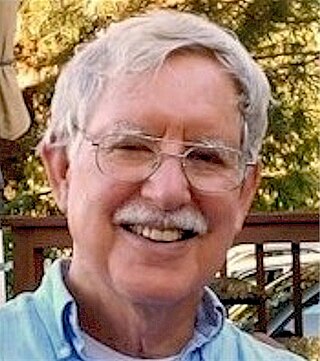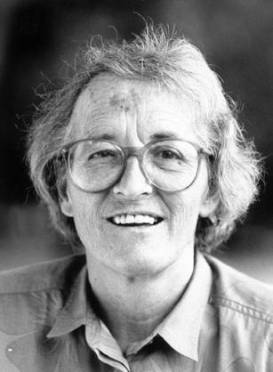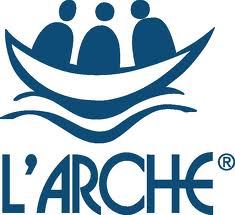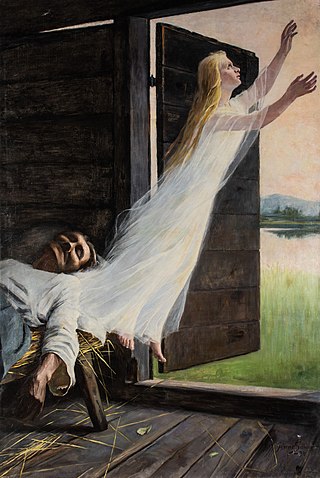The topic of this article may not meet Wikipedia's notability guideline for biographies .(February 2020) |
Michael B. Sabom is an American cardiologist, confessing Christian [1] and near-death experience researcher.
The topic of this article may not meet Wikipedia's notability guideline for biographies .(February 2020) |
Michael B. Sabom is an American cardiologist, confessing Christian [1] and near-death experience researcher.
Sabom attended Colorado College, graduating in 1966. [2] He completed his medical education at the University of Texas Medical Branch in 1970. [3] [4] He completed his cardiology training at the University of Florida in 1978. [4]
After finishing his training, Sabom spent a few years as an assistant professor of cardiology at Emory University [5] before moving into private practice. [3] He retired from private practice in 2017. [4]
Sabom is known for his work on near-death experiences. He is a founding member of the International Association for Near Death Studies. [6]
Sabom has written two books about near-death experiences. The first book, Recollections of Death: A Medical Investigation, was released in 1982. Sabom presented interviews with 116 people who had experienced a near-death crisis, which he discusses and classifies. This book was positively received for providing a relatively objective and medicine-based point of view, [7] [8] though one reviewer speculated that the "author's wish to believe may have colored his analysis." [7] It has been cited over 800 times in scholarly works, according to Google Scholar. [9]
The second book, Light and Death, was released in 1998. Similarly to the first book, Sabom interviews 160 patients following near-death crises. Although it still retained some medical and scientific aspects, this book was written from a more religious (Christian) viewpoint. [10] The book is notable for describing the Pam Reynolds case, a case of a near-death experience that has received some media attention, [11] and which Sabom investigated. This work (particularly that involving Pam Reynolds) has been criticized by the author Sam Harris for possible experimenter bias, unconscious witness tampering and false memories. [12]
An interview with Sabom was featured in the 2023 film After Death . [13]

Life After Life is a 1975 book written by psychiatrist Raymond Moody. It is a report on a qualitative study in which Moody interviewed 150 people who had undergone near-death experiences (NDEs). The book presents the author's composite account of what it is like to die, supplemented with individual accounts. On the basis of his collection of cases, Moody identified a common set of elements in NDEs:

Kenneth Ring is an American psychologist, born in San Francisco, California. He is the co-founder and past president of the International Association for Near-Death Studies (IANDS) and is the founding editor of the Journal of Near-Death Studies. He currently lives in Kentfield, California.

An out-of-body experience is a phenomenon in which a person perceives the world from a location outside their physical body. An OBE is a form of autoscopy, although this term is more commonly used to refer to the pathological condition of seeing a second self, or doppelgänger.

Jon Krakauer is an American writer and mountaineer. He is the author of bestselling non-fiction books—Into the Wild; Into Thin Air; Under the Banner of Heaven; and Where Men Win Glory: The Odyssey of Pat Tillman—as well as numerous magazine articles. He was a member of an ill-fated expedition to summit Mount Everest in 1996, one of the deadliest disasters in the history of climbing Everest.

Elisabeth Kübler-Ross was a Swiss-American psychiatrist, a pioneer in near-death studies, and author of the internationally best-selling book, On Death and Dying (1969), where she first discussed her theory of the five stages of grief, also known as the "Kübler-Ross model".
Near-death studies is a field of psychology and psychiatry that studies the physiology, phenomenology and after-effects of the near-death experience (NDE). The field was originally associated with a distinct group of North American researchers that followed up on the initial work of Raymond Moody, and who later established the International Association for Near-Death Studies (IANDS) and the Journal of Near-Death Studies. Since then the field has expanded, and now includes contributions from a wide range of researchers and commentators worldwide. Research on near-death experiences is mainly limited to the disciplines of medicine, psychology and psychiatry.

L'Arche is an international federation of non-profit organisations working to create networks of community where people with and without intellectual disabilities live and work together. Founded in 1964 by Jean Vanier, Raphaël Simi, and Philip Seux, L'Arche emerged as a reaction and community-based alternative to the ill-treatment and dismal living conditions in the psychiatric institutions of the 1960s.

Ben Michael Goldacre is a British physician, academic and science writer. He is the first Bennett Professor of Evidence-Based Medicine and director of the Bennett Institute for Applied Data Science at the University of Oxford. He is a founder of the AllTrials campaign and OpenTrials, aiming to require open science practices in clinical trials.
The International Association for Near-Death Studies (IANDS) is a nonprofit organization based in Durham, North Carolina in the United States, associated with near-death studies. The Association was founded in the US in 1981, in order to study and provide information on the phenomena of the near death experience (NDE). Today it has grown into an international organization, which includes a network of more than 50 local interest groups, and approximately 1,200 members worldwide. Local chapters, and support groups, are established in major U.S cities. IANDS also supports and assists near-death experiencers (NDErs) and people close to them. In one of its publications the organization has formulated its vision as one of building "global understanding of near-death and near-death-like experiences through research, education, and support".
Lawrence Irvin Conrad is a British historian and scholar of Oriental studies, specializing in Near Eastern studies and the history of medicine. He currently serves as historian for the Wellcome Institute for the History of Medicine in London.
Charles Bruce Greyson is an American psychiatrist and near-death experience researcher. During his research of near-death experiences, known as near-death studies, he has documented many accounts of near-death experiences, and has written many journal articles, as well as participated in media interviews on the subject, playing a crucial role in inviting broader cross-disciplinary scientific inquiry to the field.

90 Minutes in Heaven is a 2004 Christian book written by Don Piper with Cecil Murphey. The book documents the author's death and resurrection experience in 1989. 90 Minutes in Heaven remained on the New York Times Bestseller List for more than five years and has sold over six million copies. The book has also been adapted into a feature-length film, released in theaters on September 11, 2015.

TM and Cult Mania is a non-fiction book that examines assertions made by the Transcendental Meditation movement (TM). The book is authored by Michael Persinger, Normand Carrey and Lynn Suess and published in 1980 by Christopher Publishing House. Persinger is a neurophysiologist and has worked out of Laurentian University. He trained as a psychologist and focused on the impacts of religious experience. Carrey is a medical doctor who specialized in psychiatry. He focused his studies into child psychiatry with research at Dalhousie University, and has taught physicians in a psychiatry residency program in the field of family therapy. Suess assisted Persinger in researching effects of geological phenomena on unidentified flying object sightings in Washington; the two conducted similar research in Toronto and Ottawa.
Pam Reynolds Lowery, from Atlanta, Georgia, was an American singer-songwriter. In 1991, at the age of 35, she stated that she had a near-death experience (NDE) during a brain operation performed by Robert F. Spetzler at the Barrow Neurological Institute in Phoenix, Arizona. Reynolds was under close medical monitoring during the entire operation. During part of the operation she had no brain-wave activity and no blood flowing in her brain, which rendered her clinically dead. She claimed to have made several observations during the procedure which medical personnel reported to be accurate.
Satwant Pasricha is the head of Department of Clinical Psychology at NIMHANS, National Institute of Mental Health and Neurosciences at Bangalore. She also worked for a time at the University of Virginia School of Medicine in the USA. Pasricha investigates reincarnation and near-death experiences. Pasricha co-authored the 2011 book Making sense of near-death experiences, which was Highly Commended in the Psychiatry category at the 2012 British Medical Association Book Awards.

A near-death experience (NDE) is a profound personal experience associated with death or impending death, which researchers describe as having similar characteristics. When positive, which the great majority are, such experiences may encompass a variety of sensations including detachment from the body, feelings of levitation, total serenity, security, warmth, joy, the experience of absolute dissolution, review of major life events, the presence of a light, and seeing dead relatives. When negative, such experiences may include sensations of anguish, distress, a void, devastation, and seeing hellish imagery.

Robert F. Spetzler is a neurosurgeon and the J.N. Harber Chairman Emeritus of Neurological Surgery and director emeritus of the Barrow Neurological Institute in Phoenix, Arizona. He retired as an active neurosurgeon in July 2017. He is also Professor of Surgery, Section of Neurosurgery, at the University of Arizona College of Medicine in Tucson, Arizona.
Peter Brooke Cadogan Fenwick is a neuropsychiatrist and neurophysiologist who is known for his studies of epilepsy and end-of-life phenomena.
Sam Parnia is a British associate professor of Medicine at the NYU Langone Medical Center where he is also director of research into cardiopulmonary resuscitation. In the United Kingdom, he is director of the Human Consciousness Project at the University of Southampton. Parnia is known for his work on near-death experiences and cardiopulmonary resuscitation.

Melvin L. Morse is an American medical doctor who specializes in pediatrics. He has authored several books and articles on paranormal science and near-death experiences in children, including the 1987 New York Times bestseller Closer to the Light, written jointly with Paul Perry, and with a foreword written by Raymond Moody. Morse has authored many journal articles, and has given media interviews on the subject of near-death experiences.